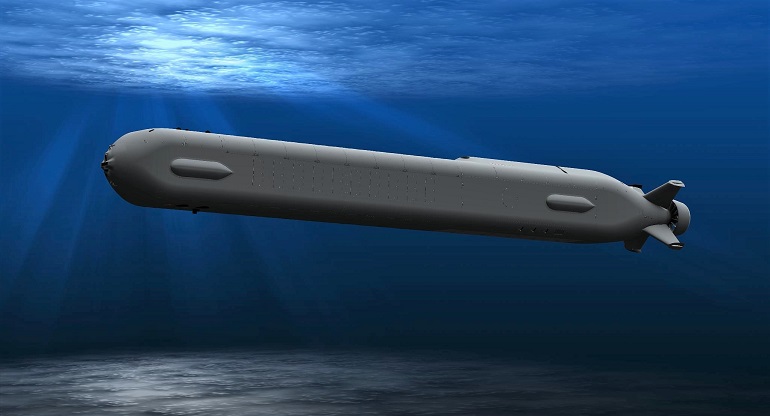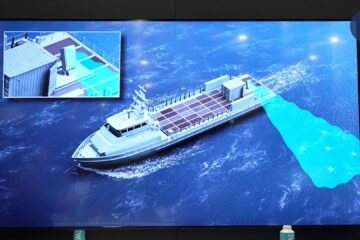SSN(X), Virginia-class attack and Columbia-class Ballistic Missile Submarines
U.S. Navy CNO Admiral Gilday believes that the future U.S. Navy composition strategy is heavily reliant on submarines and thus the shipbuilding budget, 48-percent of it, is dedicated to undersea warfare and building new submarines such as the Virginia-class attack sub and the Columbia-class ballistic missile submarines. Representative Lauria also believes that funding for new submarines is the correct U.S. Navy approach.
“We are all tooth. We are going after the enemy with all our weapon systems. We really have to be the secure and survivable service [with secure JAGC2 communications].”
RADM Bill Houston, Director, Undersea Warfare Operations, N97, Chief of Naval Operations
RADM Bill Houston, Director, Undersea Warfare Operations, N97, Chief of Naval Operations, said that the U.S. Navy will have a 74 SSN force in the next few decades to go deep behind the enemy lines and work with the Joint Force in relaying Intelligence, Surveillance, and Reconnaissance back to the Joint Force. In order to achieve this task, subs will need to maintain stealth at all times to be the “Inside force.” However, Dr. Andrew Mara, Vice President and Director, Systems, Tactics, and Force Development Division, Center for Naval Analysis, still believes that the demand for U.S. subs will exceed the supply available in the fleet.
Mr. Kevin Graney, President General Dynamics Electric Boat said that his shipyard is capable of building two Virginia SSNs and one Columbia SSBN a year due to current requirements and funding. RADM Jeffrey Jablon, Commander, Submarine Force, U.S. Pacific Fleet stated that a larger numbered sub force allows for more training at sea because of the quantity of hulls available. Jablon also said that U.S. submarines have to maneuver to achieve battlefield effects in an Anti-Access Area Denial Environment and that submarines must integrate with the Joint Force to collaborate in Distributed Maritime Operations and Distributed Lethality.
SSN(X) Next-generation attack submarine

“We’re looking at the ultimate apex predator for the maritime domain [for SSN(X) next-generation attack submarine]. It is going to be faster, carry a significant punch, bigger payload, larger salvo rate; it’s going to have acoustic superiority, and simultaneous, we’re going to work on operational availability in terms of maintenance and life of the ship.”
RADM Bill Houston, Director, Undersea Warfare Operations, N97, Chief of Naval Operations
The U.S. Navy’s plan for the SSN(X) is to combine the Seawolf-class’s incredible speed and payload, the Virginia-class’s sharp acoustics and sensors, and the Columbia-class’s operational availability and long service life. “It really needs to be right for that major combat operations. It’s going to need to be able to go behind enemy lines to deliver that punch that is going to really, really establish our primacy. It needs to deny the adversary the ability to operate in its bastion region. We’re confident that we’re going to be able to do that,” said RADM Houston.
SSN(X) is timed for when the Columbia-class SSBN is ramping down in production; therefore, the SSN(X) will be ramping up with a decade of RDT&E [Development, testing, and evaluation]. “It’s a daunting task, but the team is more than capable of doing it,” said Houston. Mr. Kevin Graney, President General Dynamics Electric boat admitted,“We got the design team coming off of Columbia right now” to start work on SSN(X) designing.
Columbia-class SSBN

RADM Bill Houston stated at the Prequel that the U.S. Navy is committed to fully funding the Columbia-class program (FY2021 estimates of $109.8 billion for 12 SSBNs, or $9.15 billion per boat) and sees this as a “Top Priority” program. The U.S. Navy is also exploring on if they can accelerate the program but admits that it needs to be watched closely.
RADM Houston mentioned that Hulls 3 to 12 is a fragile time in the SSBN program for progress and requires close monitoring by the U.S. Navy. Hulls 1-2 will be given significant time to learn lessons and that there will be a one-year gap between Hulls 2-3.
Unmanned Undersea Vehicles and Unmanned Submarines

Dr. Andrew Mara, Vice President and Director, Systems, Tactics, and Force Development Division, Center for Naval Analysis, stated that unmanned submarines will be a good operational asset, but the U.S. Navy has to make sure to have the shipyards, the workforce, the maintenance, and the people required to operate unmanned submarines. Mr. Mara envisions unmanned subs will have and be new weapons in the next 10 years.
RADM Bill Houston said that Unmanned Undersea Vehicles (UUVs) is a key program and that the U.S. Navy is looking at a whole family of UUV systems from very small Remote Operated Vehicles (ROVs) to the Extra Large Unmanned Undersea Vehicles (XLUUVs) such as the Echo Voyager. Houston said that the Navy is aware of the advantages of manned vs. unmanned systems because the underwater environment is a very, very difficult environment to operate in in terms of submarine engineering propulsion, communications, sensors, HVAC and life support systems, and that there just aren’t enough manned subs to host Dry Deck Shelters (to transport and launch UUVs).
RADM Houston mentioned that unmanned submarines can be designed for multirole or specific missions, such as mine warfare, electronic warfare and strike mission, undersea and/or Joint-Force relay communications, anti-submarine warfare, anti-surface warfare, or to execute specific missions—all this to become a real “Force Multiplier” for the U.S. Navy. RADM Houston stresses that the U.S. Navy needs “To do a little, learn a lot, and that the Navy doesn’t have time to do this wrong” when it comes to developing and fielding unmanned submarines. RADM Jeffrey Jablon, Commander, Submarine Force, U.S. Pacific, went further to iterate that UUVs will get a major command within the U.S. Navy and that UUVs demonstrated an increased combat capability during recent naval exercises with many of the lessons learned being Classified.






